- Home
- Joy Fielding
Missing Pieces
Missing Pieces Read online
HIGH PRAISE FOR JOY FIELDING
AND
MISSING PIECES
“JUST WHEN YOU THOUGHT IT WAS SAFE TO GO BACK TO THE SUBURBS, FIELDING TURNS UP THE HEAT AGAIN … ANYBODY WHO’S EVER BEEN AFRAID OF LOSING HER LOOKS OR HER HUSBAND, OR RATTLING THE SKELETONS IN THE FAMILY CLOSET WILL BE HOPELESSLY HOOKED.”
—Kirkus Reviews
“[JOY FIELDING] TAKES DOMESTIC SITUATIONS THAT EVERYONE FACES AND COMBINES THEM WITH CHILLING SUSPENSE.”
—Richmond Times-Dispatch
“A DANDY PSYCHOLOGICAL THRILLER … FIELDING PACES HER STORY WELL … THE CHARACTERS RING TRUE.”
—St. Louis Post-Dispatch
“FIELDING KEEPS THE READER GUESSING.”
—St. Petersburg Times
Also by Joy Fielding
Grand Avenue
The First Time
Don’t Cry Now
Tell Me No Secrets
See Jane Run
The Deep End
Life Penalty
The Other Woman
Kiss Mommy Goodbye
For Carole
Acknowledgments
I wish to thank officials at the Union Correctional Institution and the Florida State Prison who provided me with much needed information. I would especially like to thank the staff of the medical examiner’s office of Palm Beach County who were so generous with both their time and expertise. A special thank-you to Lawrence L. Lewis, a volunteer at the Palm Beach County Courthouse, who gave me directions, pamphlets, and a much-appreciated cup of coffee at the end of a very long day.
My heartfelt gratitude to Larry Merkin and Beverley Slopen, both of whom read earlier drafts of the manuscript and offered invaluable advice and encouragement.
Thank you to Janet Tanzer and Sally Muir, two of the world’s great family therapists, whose wit and wisdom changed my life. And to my daughters, Shannon and Annie—I couldn’t have written this book without them.
Lastly, my thanks to my husband, Warren, for everything.
Chapter 1
Another woman is missing.
Her name is Millie Potton and she was last seen two days ago. According to today’s paper, Millie is tall and thin and walks with a slight limp. She is fifty-four years old, which isn’t surprising. Only women over fifty have names like Millie anymore.
The small article on page three of the local news section of the Palm Beach Post states that she was last seen wandering down the street in her bathrobe by a neighbor, a woman who obviously saw nothing particularly peculiar in the incident. Millie Potton, the article continues, has a long history of mental problems, the implication being that it is these mental problems that are responsible for her disappearance and are not therefore anything the rest of us have to be concerned about.
Over two dozen women have disappeared from the Palm Beach area in the last five years. I know because I’ve been keeping track, not consciously, at least not at first, but after a while their numbers just started adding up, and a vague figure affixed itself to my conscious mind. The women range in age from sixteen to sixty. The police have dismissed some as runaways, especially the younger ones, girls like Amy Lokash, age seventeen, who left a friend’s house at ten o’clock one evening and was never seen or heard from again. Others, and Millie Potton will undoubtedly be among them, have been dismissed for any number of indisputably logical reasons, even though the police were wrong about Amy Lokash.
Still, until a body turns up somewhere, stuffed into a garbage bin behind Burger King like Marilyn Greenwood, age twenty-four, or floating facedown in a Port Everglades swamp like Christine McDermott, age thirty-three, there really isn’t anything the police can do. Or so they say. Women, it seems, go missing all the time.
It’s quiet in the house this morning, what with everybody gone. I have lots of time to tape my report. I call it a report, but really it isn’t anything so clearly defined. It’s more a series of reminiscences, although the police have asked me to be as specific and as orderly as I can, to be careful not to leave anything out, no matter how insignificant—or how personal—something may seem. They will decide what is important, they tell me.
I’m not sure I understand the point. What’s done is done. It’s not as if I can go back and change any of the things that have happened, much as I’d like to, much as I tried to before they occurred. But I was just hitting my head against a brick wall. I knew it at the time. I know it now. There are certain things over which we have no control—the actions of others being the prime example. Much as we may not like it, we have to stand back and let people go their own way, make their own mistakes, no matter how clearly we see disaster looming. Isn’t that what I’m always telling my clients?
Of course, it’s much easier to give advice than it is to follow it. Maybe that’s one of the reasons I became a family therapist, although that certainly wasn’t the reason I gave on my college entry application. There, if memory serves me correctly, and it does so with alarmingly less frequency all the time, I listed my intense desire to help others, my reputation among friends as someone to whom they could always turn in times of trouble, my experience with my own dysfunctional family, although the term “dysfunctional” had yet to be coined at the time I entered university way back in 1966. It’s so common now, so much a part of the everyday vernacular, that it’s hard to imagine how we managed for so long without it, despite the fact that it’s essentially meaningless. What constitutes dysfunction, after all? What family doesn’t have problems? I’m certain my own daughters could give you an earful.
So, where to start? This is what my first-time clients ask all the time. They come into my office, which is on the third floor of a five-story Pepto-Bismol pink building on Royal Palm Way, their eyes wary, the fingers of one hand chipping at the wedding band on the other, as they perch on the ends of the upholstered gray-and-white chairs, their lips parting in anticipation, their mouths eager to give voice to their rage, their fears, their displeasure, and the first thing that tumbles out is always the same: Where do I start?
Usually, I ask them to describe the event that brought them to my office, the proverbial straw that broke the camel’s back. They think for several seconds, then start slowly, building their case from the ground up, like a new house, piling detail upon detail, like blocks, one on top of the other, one indignity crowding against another, perceived slight over implied threat, the words spilling out so fast that they barely have time to fit them all into the space of an hour.
I’ve used a building analogy—Larry would be amused at this. Larry is my husband of twenty-four years, and he’s a builder. A good portion of those spectacular new homes going up on golf courses across Palm Beach County are his. His profession is supposedly the reason we relocated from Pittsburgh to Florida some seven years ago, but I’ve always suspected that at least part of the reason Larry was so anxious to move down here was to get away from my mother and sister. He denies this, but since it was a large part of the reason I agreed so readily to the move, I have always found his denials suspect. It’s pretty much a moot point anyway, since my mother followed us here less than a year later, and my sister several months after that.
My sister’s name is Jo Lynn. Or at least, that’s the name she goes by. Her real name is Joanne Linda. But our father took to calling her Jo Lynn when she was just a child, and the name stuck. Actually, it suits her. She looks like a Jo Lynn, tall and blond and bosomy, with an infectious giggle that starts somewhere deep in her throat and ends up floating around her head like fairy dust. Even the deep, honey-coated Southern accent she’s affected since moving to Florida seems more right, more genuine somehow, than the flat, cold tones of the North she spoke with for most of her thirty-seven years.
I said my father, but in fact he wa
s only Jo Lynn’s father, and not mine. My father died when I was eight years old. The way my mother tells it, he got up from the dinner table to get a glass of milk, remarked casually that he felt a hell of a headache coming on, and the next minute he was dead on the floor. An aneurysm, the doctor later pronounced. My mother remarried the following year, and Jo Lynn came along the year after that, just weeks after my tenth birthday.
My stepfather was a mean and manipulative man who relied more on his fists than his brains, assuming he had any. I’m sure it was from him that Jo Lynn acquired her lifelong habit of picking abusive men, although he was always very tender with her, his clear favorite. It was my mother who bore the brunt of his ill temper. Aside from a few well-placed cuffs to the back of the head, he largely ignored me. At any rate, my mother left him when Jo Lynn was thirteen and I’d already left home to marry Larry. My stepfather died the following year of pancreatic cancer. Jo Lynn was the only one of us who mourned.
And now I cry for my sister, as I have so often over the years. Technically, of course, she’s only my half sister, and the ten-year age difference, coupled with her often erratic behavior, made it difficult for us to be close. But I will never forget the morning my mother first brought her home from the hospital, how she walked toward me cradling this small golden bundle in her arms and gently transferred her to mine, telling me I had a real doll to help care for now. I remember standing beside her crib for hours at a time while she slept, watching carefully for telltale signs of growth, as she moved inexorably from baby to toddler. She was such a beautiful child, so headstrong and confident, in the way small children have of knowing that they are absolutely right about everything, that it’s still hard to reconcile that image with the lost soul she grew into, one of those people who wander aimlessly through life, always convinced that success and happiness are just around the corner. Except that she’d get distracted, forget what direction she was headed in, make a wrong turn, and end up on a dead-end street, no corners anywhere in sight.
I see traces of her in my older daughter, Sara, who also has to learn everything the hard way, and it scares me. Maybe that’s why I’m on her back all the time, or so she says. Actually, Sara never says anything—she yells. She believes that the way to win an argument is to keep repeating the same thing over and over, each time louder than the time before. She’s probably right, because eventually you either give in or run screaming from the room. I’ve done both more times than I care to admit. My clients would be properly horrified.
Sara is seventeen and stands just under six feet tall. Like Jo Lynn, she has big green eyes and huge breasts. I don’t know where they came from. To be honest, I’m not all that sure where she came from. Sometimes, I look at her when she’s in the middle of one of her tirades and wonder: Did the hospital make a mistake? Could this tall, wide-eyed, big-breasted creature screaming at me at the top of her lungs really be mine? There are days when I look at her and I think that she’s the most beautiful thing on the face of this earth. Then there are other days when I swear she looks just like Patricia Krenwinkel. You remember her—she was one of Charles Manson’s murderous gang, the sullen-faced teenaged killer with the long brown hair parted lazily down the middle, her eyes blank yet unforgiving, the same look I occasionally see on Sara’s face. Sara wears clothes I swear I threw out twenty-five years ago, those shapeless, see-through, Indian caftans I have since come to despise, unlike Michelle, my fourteen-year-old, who will only wear clothes from Club Monaco and The Gap, and who carefully monitors each family altercation from the sidelines, commenting on the action later, like some skinny, adolescent Greek chorus. Or budding family therapist.
Is that why I have relatively few problems with my younger child? Do I want, as my elder daughter has suggested numerous times, that everyone be exactly like me? “I’m not you,” she yells. “I’m my own person!” And isn’t that exactly what I’ve brought her up to be? But does her own person have to be so objectionable? Was I so rebellious, so rude, so downright miserable? I ask my mother, who smiles cryptically and assures me I was perfect.
Jo Lynn, she adds wearily, was another story.
“I wish on you a daughter just like you,” I still hear my mother shouting at Jo Lynn in exasperation, something I’ve had to bite my tongue to keep from saying myself on more than one occasion. But whether out of spite or fear, my sister remained childless through three failed marriages, and I ended up with the daughter just like Jo Lynn. It doesn’t seem fair. I was the one who played by the rules. If I was rebellious at all, I did so within all the prescribed parameters. I stayed in school, got my degree, didn’t smoke, drink, or do drugs, and married the only man with whom I’d ever had sex. By contrast, Jo Lynn stayed in college only long enough to tune in, turn on, drop out, and was sexually active early and often. I became a family therapist; she became a family therapist’s worst nightmare.
Why am I going into all this? Is this really the sort of thing the police will feel is relevant? I don’t know. In truth, I don’t know much of anything anymore. My whole life feels like one of those giant jigsaw puzzles, the kind that takes forever to put together, and then just when you’re coming to the end, right at the point where you finally think you’ve got it, you discover that all the key pieces are missing.
With age comes wisdom, I distinctly remember hearing in my youth. I don’t think so. With age comes wrinkles, I’m sure they meant. And bladder problems, and arthritis, and hot flashes, and memory loss. I’m not handling aging very well, which surprises me, because I always thought I’d be one of those women who grew old gracefully. But it’s hard to be graceful when you’re running to the bathroom every ten minutes or breaking into a sweat just after you’ve finished applying your makeup.
Everyone is younger than me. My dentist, my doctor, my daughters’ teachers, my neighbors, the parents of my children’s friends, my clients, even the police who came to question me—they’re all younger than I am. It’s funny because I always assume that I’m younger than everyone else, and then I find out that not only am I older, I’m years older. And I’m the only one who’s surprised.
Actually I surprise myself sometimes. I’ll be all dressed up, feeling good, thinking I look great, and then I catch my reflection unexpectedly in a store window or a pane of glass, and I think: Who is that? Who is that middle-aged woman? It can’t be me. I don’t have those bags under my eyes; those aren’t my legs; surely that’s not my rear end. It’s genuinely frightening when your self-image no longer corresponds to the image you see in the mirror. It’s even scarier when you realize that other people barely see you at all, that you’ve become invisible.
Maybe that explains what happened with Robert.
How else can I explain it?
I’m doing it again, digressing, going off on one of my famous tangents. Larry says I do it all the time. I explain that I’m working my way up to the main point; he claims I’m trying to avoid it. He’s probably right. At least, in this instance.
I’m about to have a hot flash. I know because I just got that horrible feeling of anxiety that always precedes it, as though someone has emptied a glass of ice water down my throat. It fills my chest, lies like a puddle around my heart. Ice followed by fire. I’m not sure which is worse.
At first I thought these feelings of anxiety were related to the chaos that was going on around me. I blamed my mother, my sister, Robert, the trial. Anything. But gradually I realized that these feelings of dread were immediately followed by tidal waves of heat that surged upward from the pit of my stomach toward my head, leaving me perspiring and breathless, as if I were in danger of imploding. I marvel at the strength of these interludes, at how powerless I am to stop them, at how little control I have over my own life.
My body has betrayed me; it follows an invisible timetable all its own. I wear reading glasses now; my skin is losing some of its elasticity, rippling like cheap fabric; there are thin lines around my neck, like the age lines of a tree. Things grow inside me, uninvited.
I was at the doctor’s recently for a checkup. During the course of a routine pelvic examination, Dr. Wong, who is tiny and delicate and looks all of eighteen, discovered several cervical polyps which she said had to be removed. “How did they get there?” I asked. She shrugged. “These things happen as we get older.” She gave me the choice: she could schedule an operation in several weeks under a general anesthetic or she could snip them out right there and then in her office, no anesthetic at all. “What do you recommend?” I asked, not thrilled with either alternative. “How high is your pain tolerance?” she answered.
I opted to have the polyps out in her office. As it turned out, it was a relatively simple procedure, taking less than ten minutes, during which time the doctor explained clearly, and in more detail than I really needed, everything she was doing. “Now you might feel as if you have to go to the bathroom,” I remember her saying seconds before my stomach began twisting into a series of tight little knots.
When she was finished, Dr. Wong held up a small glass jar for my inspection. Inside were two little round red balls, the size of large cranberries. “See,” she said, almost proudly, “these are your polyps.”
Twins, I thought giddily, then burst into tears.
I was supposed to call her office two weeks later to find out if there was a problem. I can’t remember now whether I did or not. It was in the middle of all the craziness. It’s quite possible I forgot.
Something is happening across the street. I can see it from the window. I’m sitting at my desk in the den, a small, book-lined room at the front of the house off the center foyer. Do the police want a description of the house? I’ll include one, although surely they know it. They’ve been here enough times; they’ve taken enough photographs. But for the record, the house is a relatively large bungalow with three bedrooms and a den. The girls’ bedrooms are to the right of the front door, the master bedroom to the left at the back. In between are the living and dining rooms, four bathrooms, and a large open space consisting of the kitchen, the breakfast nook, and the family room, whose back wall is a series of paneled glass windows and sliding glass doors overlooking the kidney-shaped backyard pool. The ceilings are high and dotted with overhead fans, like the one turning softly above my head right now, the floors large blocks of ceramic tile, interrupted by plush area rugs. Only the bedrooms and den have wall-to-wall broadloom. The predominant color is beige, with accents in brown, black, and teal. Larry built the house; I decorated it. It was supposed to be our sanctuary.

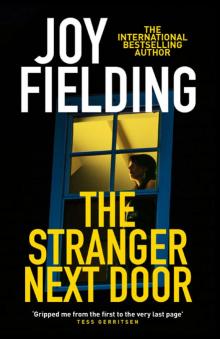 The Stranger Next Door
The Stranger Next Door Cul-de-sac
Cul-de-sac The Final Act
The Final Act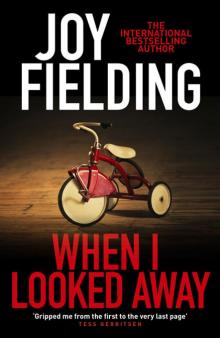 When I Looked Away
When I Looked Away She's Not There
She's Not There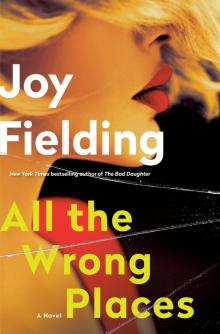 All the Wrong Places
All the Wrong Places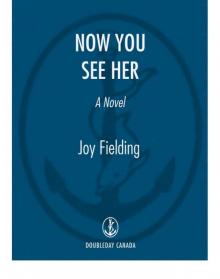 Now You See Her
Now You See Her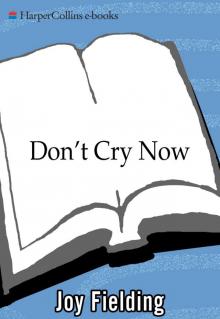 Don't Cry Now
Don't Cry Now Good Intentions
Good Intentions Still Life
Still Life Lost
Lost The First Time
The First Time Whispers and Lies
Whispers and Lies The Other Woman
The Other Woman Charley's Web
Charley's Web Mad River Road
Mad River Road Puppet
Puppet Life Penalty
Life Penalty The Wild Zone
The Wild Zone Home Invasion
Home Invasion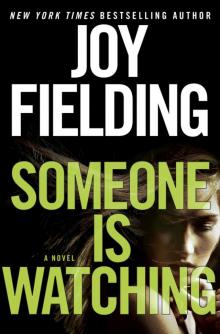 Someone Is Watching
Someone Is Watching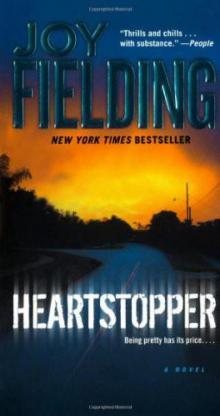 Heartstopper
Heartstopper See Jane Run
See Jane Run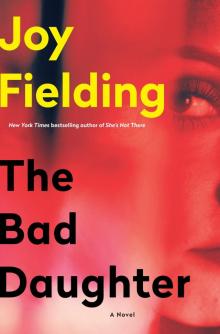 The Bad Daughter
The Bad Daughter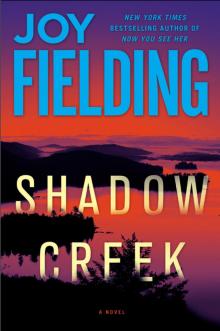 Shadow Creek
Shadow Creek Missing Pieces
Missing Pieces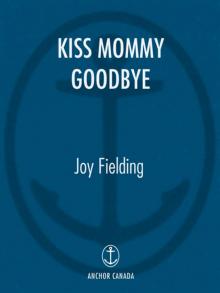 Kiss Mommy Goodbye
Kiss Mommy Goodbye Grand Avenue
Grand Avenue